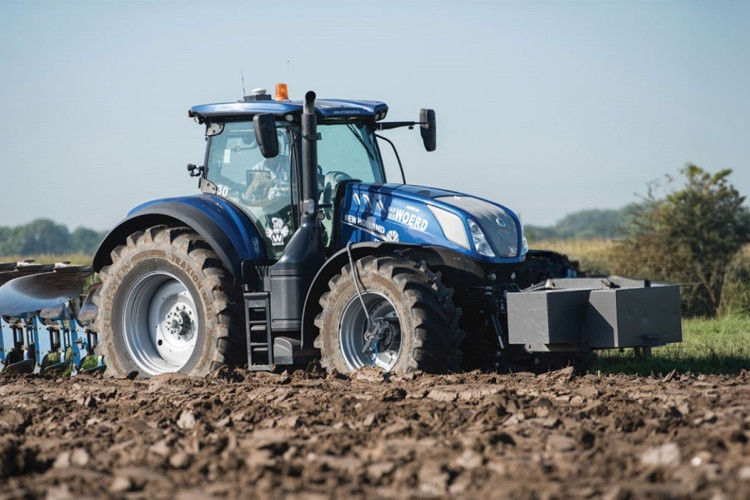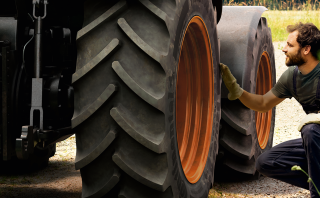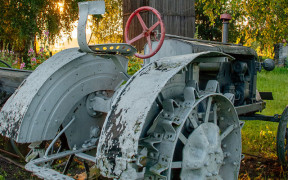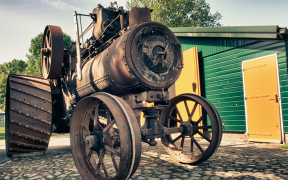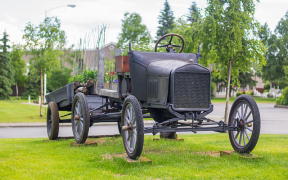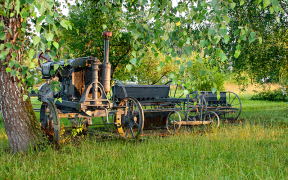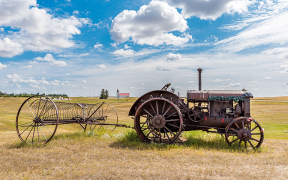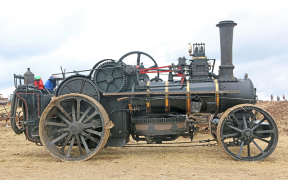The history of tractor tyres
One of the most important inventions of modern times has to be the tractor. Those trusty workhorses that have shaped and cultivated the land so mankind can feast on the bounty agriculture provides. The machines themselves are works of wonders, all connected, clever and more than a little costly. But it wasn’t too long ago when they were a bit, well...agricultural. Especially the tyres.
The First Rubber Tractor Tyres
The First Pneumatic Tractor Tyres
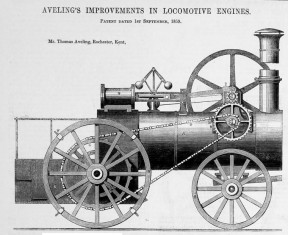
Known as ‘the Fens’, the north eastern area around the Isle of Ely in Cambridgeshire is known for its rich soil. It’s long been an important agricultural centre and is particularly good at growing potatoes and vegetables. It was also home for generations of the Aveling family, including young Tom Aveling, better known as the father of traction-engines. Back in 1856, Thomas produced the first steam plough. He would go on to hold 8 patents, although most were for his later work in the development of steam rollers.
Whilst the concert of using steam power to help move machinery on farms was started with the work by Aveling, it wasn’t until 1892 that the world was to be introduced to something resembling something we might more readily recognise as a tractor. American John Froelich had a small business threshing crops for farmers throughout Iowa and the Dakotas. It was tedious, slow work with the constant risk of a spark from the steam powered machine could ignite the entire crop. John figured he might have the answer though, and proceeded to mount a gasoline engine onto the steam engine’s running gear. It worked and his new tractor happily chugged along at 3mph. The invention led to the Waterloo Gasoline Traction Engine Company. It was the first successful tractor company and made machines until 1918. Then it was bought by a plow manufacturer looking at getting into tractors. That company? John Deere.
Steel wheels & lugs
Those early machines were no doubt beneficial to speeding up things in the agricultural world. The arid, relatively land of the midwest was no issue for their steel wheel. Elsewhere the land was softer though. The steel wheels would lack traction, wasting energy from the small horsepower engines.
For a time, the answer was to use steel lugs. One of the largest lines in lugs was being offered by Australian company, Ronaldson-Tippett. By the 1920’s they had adapted several American tractors and were set to become the largest manufacturer of tractors in Australia. These huge lugs more closely resembled spikes and came in multiple configurations, some providing over 11cm of ground penetration.
The steel lugs proved to be a double-edged sword. They were good in the field for traction but did little to solve issues of soil compaction. That significant weight, when driven onto the fledgling road systems being developed in many countries, would crack and damage the roads. So much so, the lugs either had to be removed before travelling on them or covered with steel protection (no doubt adding more weight). At worst, it simply didn’t prevent some road damage. At best, it was time-consuming and annoying.
Antique tractors
The first rubber tractor tyres
It seems obvious really now but might not have been back in the early 1900’s. But if the big steel wheels were destroying the roads, it made sense to look at what was being used without causing damage. Namely, the rubber tyres being used by automobiles. By all accounts, International Harvester was the first to make the move to rubber. In 1918, they equipped a machine with solid rubber tyres on the front and solid rubber blocks moulded to steel lugs on the rear. They helped on the road but caused issues back in the paddocks, where they lacked grip and traction.
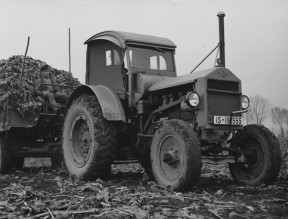
The first pneumatic tractor tyres
The evolution of tractor tyres gets a little controversial when it comes to the introduction of the pneumatic tyre. Most popular accounts have Firestone as the first to make them, in 1933. Yet Continental released the T2 five years earlier, in 1928.
Regardless, the story behind the Firestone claim is quite fascinating. In 1932, tractor manufacturer Allis Chalmers began experimenting with low-pressure inflatable tyres from aircrafts. They literally took the wheels off a plane and attached them to their own Model U tractor. Those airplane tyres were 48 x 12 tyres manufactured by Firestone. Early tests proved successful and Harvey Firestone was called in to help develop the first OE pneumatic tyres.
Despite proving hugely successful in trials, the tyres were not met with instant acceptance. Indeed, they were practically dismissed by conservative farmers locked in the mire of the great recession. To overcome the objections and prove their worth, Allis-Chalmers and Firestone undertook a little bit of early influencer marketing. Namely, they engaged the services of Barney Oldfield, the most famous car racer of the time. A team of Model U tractors and drivers (including Barney) went to 7 state fairs throughout the Midwest, where they undertook tractor races to showcase the speed possible in the new tyres. During the tour, Barney was said to set a world record tractor speed of 64.28mph (a little over 100km/h).
It seems going fast behind the wheel of a tractor even became a bit of a fad for a time there. The fine for being caught speeding on the road being much less than the publicity you got for being caught made it worth it to some. To be honest, if a tractor cranked 110km’h on the Auckland motorway it would be easy to see a few $ in publicity being attained (we’re not advocating anyone try to do this by the way).
As an interesting aside, none of this may have happened if it wasn’t for orange growers in Florida. They were tired of the steel wheels ruining their crop and it was them who contacted Allis-Chalmers to see what could be done about it all.
Over the next few years, use of pneumatic tyres in agriculture exploded. So much so, that by 1940 they made up 95% of the market. Interestingly, much of this was based on the very accurate promise that the new tyres would:
- Improve traction.
- Allow tractors to cover more ground in a day.
- Use less fuel.
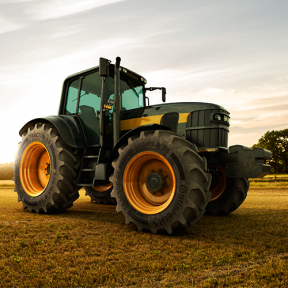
Tractor tyres today
The promises made of those early pneumatic tyres carry across to today's IF and VF agricultural tyres. They improve traction, allow more ground to be covered in a day and mean less fuel is required. They also tread lighter, leading to reduced soil compaction. You can only imagine how happy this will make a Floridian orange grower.
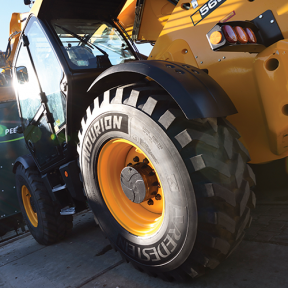
Strangely, history is repeating itself though. Despite the very well documented advantages of IF and VF tyres, they have been met with a bit of resistance from farmers. Maybe Vredestein needs to engage Lewis Hamilton for a few Field Day expos?
As for tomorrow, who knows. The ever-constant search for better performance will surely drive development. One thing is for sure, since the wheel was invented the innovations have kept rolling.
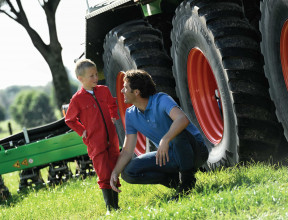
We will help you choose the best tyre for your tractor...
...so you can focus on what matters to you.
More tips and articles
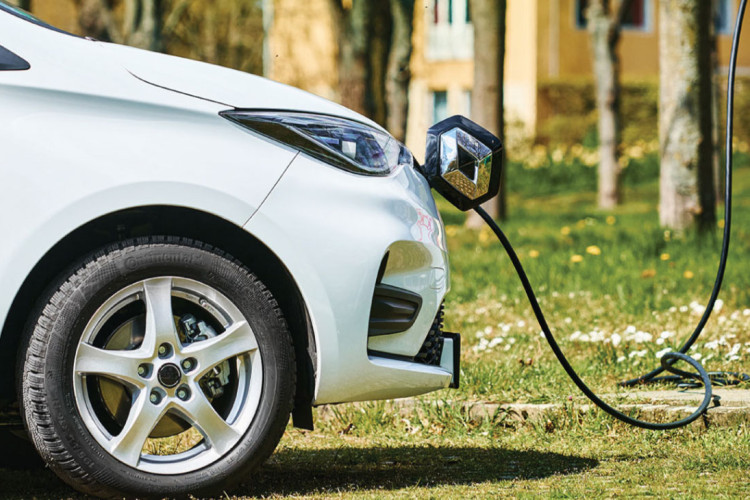
Tyres for Electric Vehicles
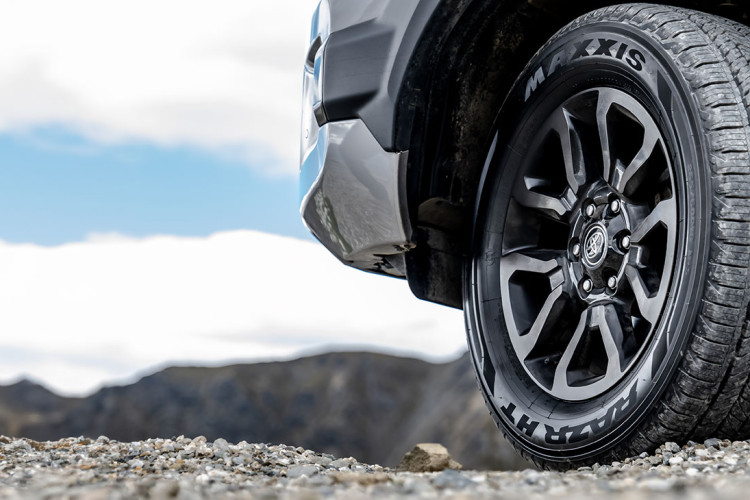
Product Spotlight:
Maxxis HT780 RAZR HT
